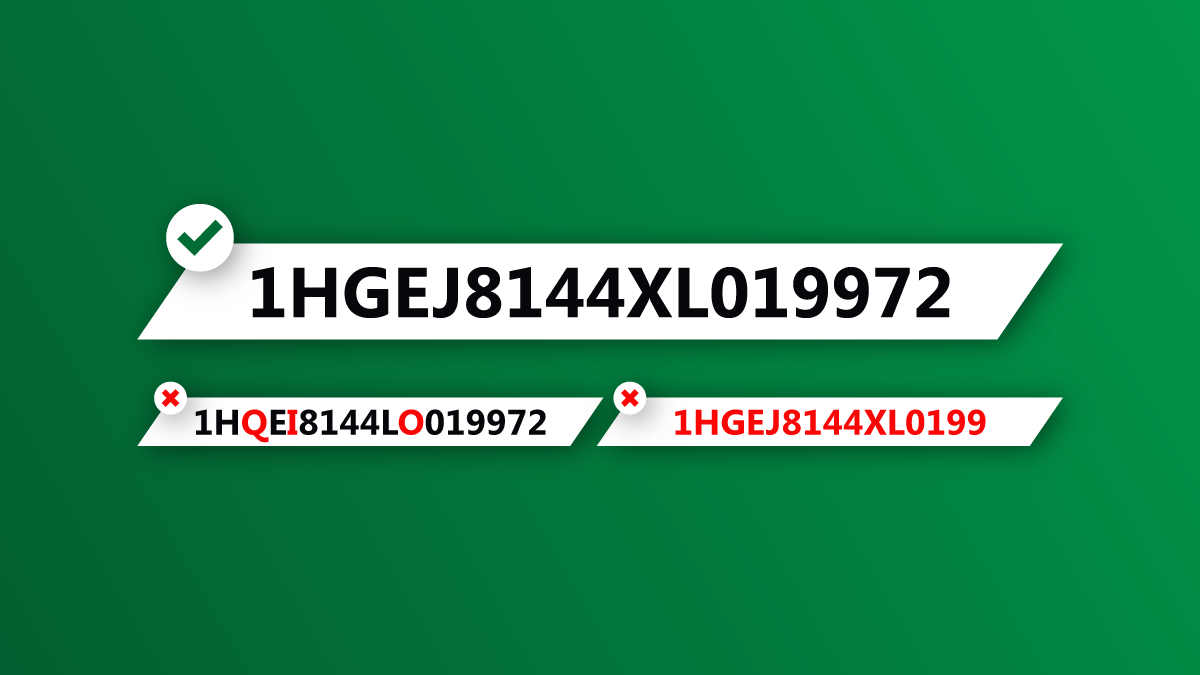Every registered vehicle has a unique Vehicle Identification Number (VIN) that carries the vehicle’s history. A VIN for a car is like a Federal Tax ID for a human, and a simple VIN lookup can help you learn a vehicle’s key specifications and its background. Alternatively, a car license plate lookup can reveal important information about a vehicle, such as its registration status, accident history, and even its previous owners.
If you’re thinking of buying a used or salvage car, we recommend having a closer look at its VIN. If the VIN is incorrect that means it may have been purposefully altered and may have been stolen. If you want to avoid dealing with such vehicles and get a few tips on revealing an incorrect VIN, just read this article.
Count the number of digits
Any vehicle produced after 1981 has a VIN that consists of 17 symbols that are Latin letters and numbers. This is an ISO standard accepted worldwide for all vehicles. If your vehicle is less than 38 years old and its VIN has less or more than 17 digits, it’s definitely incorrect and the vehicle probably has a shady past.
If you want to know more about decoding a vehicle’s VIN read this article.
Check for invalid letters
The VIN can contain any number from 0 to 9 and any letters of the Latin alphabet, except for I, O and Q. That’s because “I” can easily be mistaken for the number one by mistake, while “O” and “Q” are pretty similar to zero. The National Highway Traffic Safety Administration of the United States standardized this format in 1981. So, run a VIN check if you found one of those letters in your car’s VIN.
Find the check digit
The Vehicle Descriptor Section (VDS) of a VIN consists of characters 4-9, where 9 is a check digit. This rule is implemented in North America and China, but not in Europe.
While numerals 4-8 denote the type of your vehicle, body style, engine type, and other details, the check digit serves to detect an invalid VIN. This number is based on a mathematical formula developed by the U.S. Department of Transportation, and it always varies. The check digit can’t be anything but X or numbers from 0 to 9, so it’s pretty easy to denote if your car’s VIN is correct or not.
Run a VIN check
If you want to know more about your vehicle specs by VIN and also details concerning its history, we recommend running a professional VIN check with ClearVin. You can find a sample report on ClearVin to see what the check will look like. So, feel free to order your check anytime and protect yourself from buying a stolen car!









6 comments
I cannot thank you enough for the post. Great.
You’re so awesome! I do not suppose I have read through something like that before. So good to discover another person with some genuine thoughts on this issue. Really.. thanks for starting this up. This site is something that is required on the internet, someone with a bit of originality!
This site was… how do you say it? Relevant!! Finally I have found something which helped me. Thanks!
Like!! Thank you for publishing this awesome article.
Usually I never comment on blogs but your article is
so persuasive that I never stop myself to say something about it.
You’re doing a great job Ma,,Keep up it.
King regards,
Thomassen Henneberg
Hello. This post was extremely interesting, particularly
because I was looking for thoughts on this topic last Thursday.
Best regards,
Dinesen Henneberg